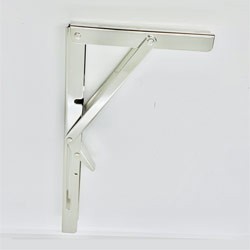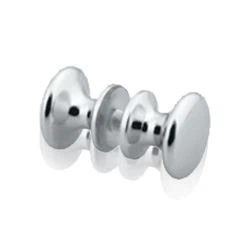What is the role of building parts in earthquake - resistant construction?
In the realm of construction, earthquake - resistant design is of paramount importance, especially in earthquake - prone regions. Building parts play a multifaceted and crucial role in ensuring that structures can withstand the forces generated by seismic events. As a building parts supplier, I have witnessed firsthand how these components contribute to the overall earthquake - resistance of a building.
Reinforcing Structural Integrity
One of the primary functions of building parts in earthquake - resistant construction is to reinforce the structural integrity of the building. For instance, steel beams and columns are essential elements. They have high strength and ductility, which allow them to absorb and dissipate the energy generated during an earthquake. Steel can bend and deform without breaking under the seismic forces, providing a safety margin for the building. When properly designed and installed, steel frames can redistribute the loads throughout the structure, preventing localized failures that could lead to the collapse of the entire building.
Concrete also plays a vital role, but it needs to be combined with appropriate building parts. Reinforcing bars, or rebar, are embedded in concrete to enhance its tensile strength. Concrete is strong in compression but weak in tension. During an earthquake, the ground motion subjects the building to both compressive and tensile forces. The rebar helps the concrete resist the tensile forces, reducing the risk of cracking and structural failure.
Another important building part in this regard is the Folding Shelf Bracket. Although it may seem like a small component, it can contribute to the overall stability of a building. In a multi - story building, the proper installation of folding shelf brackets can help secure partitions and storage units. This not only prevents these elements from toppling during an earthquake but also adds to the overall lateral stability of the structure by providing additional points of connection and support.
Energy Dissipation
Building parts can also be designed to dissipate the energy generated by an earthquake. One such example is the use of dampers. Dampers are mechanical devices that are installed in the building's structure. They work by converting the kinetic energy of the seismic motion into heat energy, which is then dissipated. There are different types of dampers, such as viscous dampers and friction dampers.
Viscous dampers use a viscous fluid to resist the movement of the building. As the building shakes during an earthquake, the fluid inside the damper resists the motion, converting the energy into heat. Friction dampers, on the other hand, use friction between two surfaces to dissipate energy. When the building moves, the friction between the surfaces generates heat, reducing the amount of energy that is transferred to the rest of the structure.
The Adjustable Glass Clamp can also contribute to energy dissipation in a building with glass facades. These clamps are designed to hold the glass panels in place. During an earthquake, the clamps can flex slightly, absorbing some of the energy from the seismic motion and preventing the glass from shattering. This not only protects the occupants of the building from broken glass but also helps maintain the integrity of the building's facade.
Connection and Anchorage
Proper connection and anchorage of building parts are essential for earthquake - resistant construction. All the components of a building need to be securely connected to each other so that they can act as a single, cohesive unit during an earthquake. For example, bolts and welds are used to connect steel beams and columns. These connections need to be strong enough to transfer the loads between the different parts of the structure without failing.


In addition, building parts need to be properly anchored to the foundation. The foundation is the base of the building, and it needs to be able to resist the lateral forces generated by an earthquake. Anchor bolts are used to secure the superstructure to the foundation. These bolts prevent the building from sliding or overturning during an earthquake.
The Stainless Steel Door Knobs may seem like a minor part, but they also need to be properly connected to the doors. In an earthquake, loose door knobs can become projectiles, posing a danger to the occupants. By ensuring that the door knobs are securely attached, we can reduce this risk and contribute to the overall safety of the building.
Flexibility and Adaptability
Building parts should also provide flexibility and adaptability to the building's structure. During an earthquake, the ground can move in different directions and at different frequencies. A building needs to be able to adapt to these changes in motion without suffering significant damage.
For example, flexible joints can be used in the building's plumbing and electrical systems. These joints allow the pipes and wires to move slightly during an earthquake, preventing them from breaking. This is important because a broken plumbing or electrical system can lead to secondary hazards such as fires and floods.
In the case of building facades, using materials and building parts that can flex and move slightly can help the facade withstand the seismic forces. For instance, curtain walls made of lightweight and flexible materials can adapt to the movement of the building, reducing the risk of damage.
Quality and Standardization
As a building parts supplier, I understand the importance of providing high - quality and standardized building parts for earthquake - resistant construction. Quality control is essential to ensure that the building parts meet the required strength and performance standards. For example, steel used in construction needs to have the right chemical composition and mechanical properties. It should be free from defects such as cracks and inclusions that could weaken the material.
Standardization is also crucial. When building parts are standardized, it becomes easier for architects, engineers, and contractors to design and construct earthquake - resistant buildings. They can rely on the known properties and performance of the standardized parts, reducing the risk of design errors.
Conclusion
In conclusion, building parts play a diverse and essential role in earthquake - resistant construction. From reinforcing structural integrity and dissipating energy to providing proper connection and anchorage, and offering flexibility and adaptability, each building part contributes to the overall safety and resilience of a building.
If you are involved in a construction project that requires high - quality building parts for earthquake - resistant design, I encourage you to reach out to me. I am committed to providing the best building parts that meet all the necessary standards and requirements. Whether you need steel beams, dampers, or small components like folding shelf brackets, stainless steel door knobs, or adjustable glass clamps, I have a wide range of products to meet your needs. Let's work together to build safer and more earthquake - resistant structures.
References
- Bruneau, M., Reinhorn, A. M., & Rosenblueth, E. (2008). Earthquake - Resistant Design of Steel and Concrete Buildings. CRC Press.
- Priestley, M. J. N., Seible, F., & Calvi, G. M. (1996). Seismic Design and Retrofit of Bridges. John Wiley & Sons.
- FEMA P - 750. (2015). Seismic Design Manual. Federal Emergency Management Agency.



